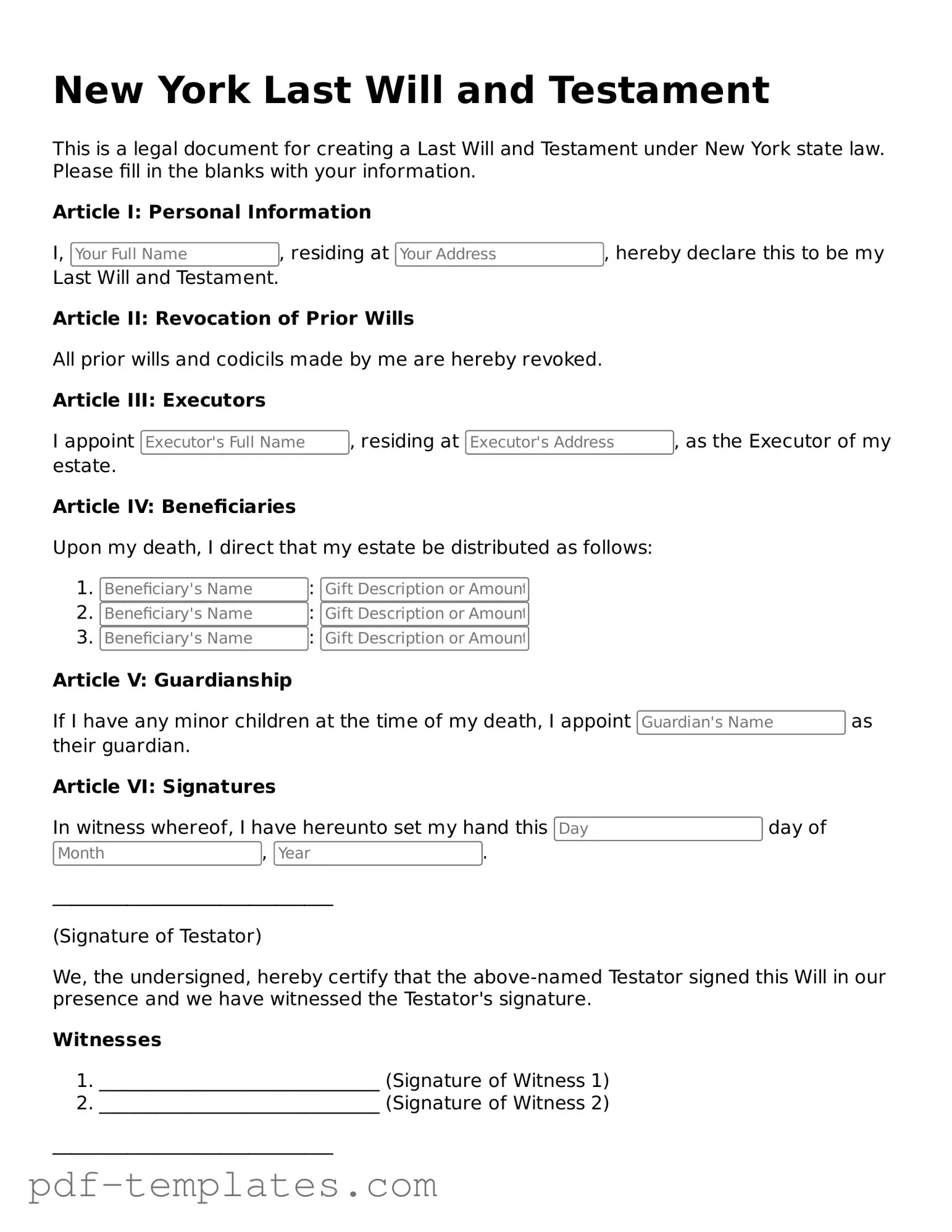The New York Last Will and Testament form shares similarities with a Living Will. A Living Will outlines an individual's preferences regarding medical treatment in situations where they are unable to communicate their wishes. Both documents serve as essential tools for expressing personal desires and ensuring that one's intentions are honored. While the Last Will focuses on the distribution of assets after death, the Living Will addresses healthcare decisions during a person's life, particularly in critical situations.
Another document comparable to the Last Will and Testament is the Durable Power of Attorney. This legal document allows a person to appoint someone else to make financial or legal decisions on their behalf if they become incapacitated. Similar to a Last Will, which takes effect after death, the Durable Power of Attorney is designed to ensure that the individual's wishes are respected, even when they cannot act on their own. Both documents emphasize the importance of having trusted individuals manage one’s affairs according to their preferences.
The Revocable Trust, or Living Trust, also bears resemblance to the Last Will and Testament. A Revocable Trust allows individuals to manage their assets during their lifetime and specifies how those assets will be distributed after their death. Unlike a Last Will, which typically goes through probate, a Revocable Trust can help avoid that process, making it a popular choice for those who want to streamline the transfer of their estate. Both documents aim to ensure that an individual’s wishes regarding asset distribution are fulfilled.
A Healthcare Proxy is another document that aligns with the Last Will and Testament. This form designates someone to make medical decisions on behalf of another person if they are unable to do so. While the Last Will deals with the distribution of property, the Healthcare Proxy focuses on healthcare choices, ensuring that a person's medical preferences are respected. Both documents highlight the importance of appointing trusted individuals to act in accordance with one’s wishes.
The California Identification Card or Senior Identification Card form, officially known as form DL 410 ID, is essential for residents seeking to apply for, renew, or replace their ID card in California. It provides crucial details on eligibility and the application process, emphasizing the need for a Social Security Number and outlining renewal by mail criteria. Moreover, it includes sections for organ donor status, veteran benefits, and voter registration, ensuring that applicants are well-informed of their options and responsibilities. For more information, individuals can visit All California Forms.
Similar to the Last Will, the Letter of Instruction provides guidance for loved ones regarding personal matters. While not a legally binding document, it often accompanies a Last Will and Testament and can cover topics such as funeral arrangements, asset distribution preferences, and other personal wishes. This informal letter serves to clarify intentions and can provide comfort to family members during a difficult time, complementing the more formal directives found in a Last Will.
Lastly, the Codicil is a document that modifies an existing Last Will and Testament. It allows individuals to make changes without drafting an entirely new will. A Codicil can add or revoke provisions, making it a flexible option for those who wish to update their wishes as circumstances change. Both documents work together to ensure that a person's final intentions are accurately reflected and legally recognized.
